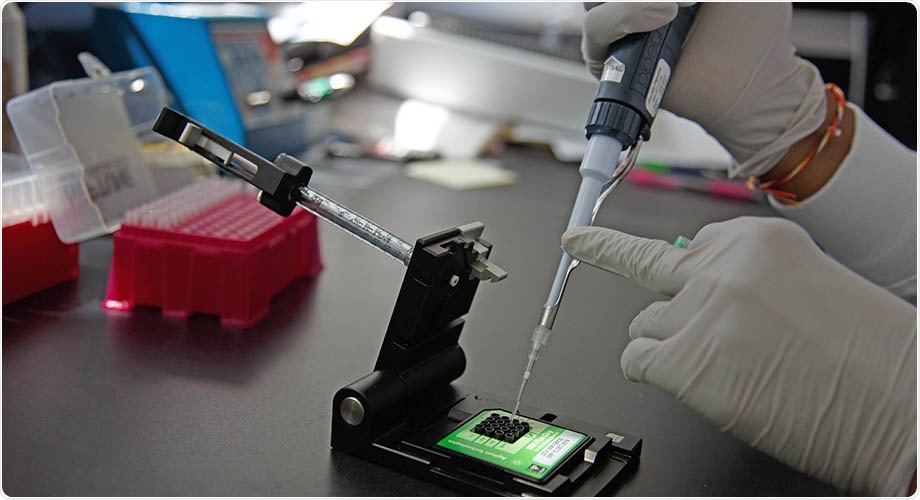Modern biologists nurture more ambitious goals and one among them is to know how to broaden or alternatively modify the genetic code of life on Earth, to create new, artificial life forms. The motivation for this “synthetic biology” research is to know further about the evolution and the logic of natural biology inherited by humans.

Ahmed Badran and colleagues at Scripps Research have supplemented the synthetic biology toolkit to streamline investigations into genetic code expansion. Image Credit: Scripps Research Institute.
However, there is a very practical motivation—Cells can be employed as effective factories for producing a wide array of beneficial molecules—particularly protein-based therapeutics, which account for a rising share of novel medicines. Cells functioning with an expanded genetic code can produce a much more different set of similar medicines and can do so as it considerably eases the overall process of creating and manufacturing them.
The attainment of the great goal of a fully functioning, beneficial synthetic biology is yet some years off. However, in the current study, researchers have undertaken an important step closer to it, by creating and illustrating major components of an expanded genetic code system. The research was published in the Nature Communications journal.
We’ve supplemented the synthetic biology toolkit to streamline investigations into genetic code expansion.”
Ahmed Badran, PhD, Study Senior Author and Assistant Professor, Department of Chemistry, Scripps Research Institute
Cells utilize the natural genetic code in life on Earth to translate information present in the RNA and DNA into the amino-acid building blocks of proteins. RNA and DNA are chain-like molecules that code information employing an “alphabet” of four nucleotide building blocks, or “letters.”
Molecules named transfer RNAs (tRNAs) decode this information by identifying three letters at one time and translate each three-letter “codon” into a single amino-acid building block of a protein. This triplet codon system can code for 64 amino acids (43)—however, only 20 amino acids are used in a majority of the organisms.
Contrarily, the visualized quadruplet system, which is based on four-letter codons, can encode 256 (44) separate amino acids. Undoubtedly, a majority of those will not be found in natural proteins, even though some can be minor variants of natural amino acids, allowing proteins to be built with more precise characteristics, for instance, to maximize their safety and efficacy as medicines.
The huge challenge here results from the fact that the gene-to-protein translation system is a complex one where numerous components should function together smoothly. The system that is found in living organisms on Earth probably took many millions of years to evolve to its current levels of precision and efficacy. Earlier efforts to engineer full new systems, including quadruplet-codon systems, have displayed promise lately.
In the current research, Badran and his co-workers employed an evolutionary, survival-of-the-fittest, technique named directed evolution to create a small set of tRNAs that in principle can function in a quadruplet system. The researchers demonstrated that these quadruplet tRNAs can be employed to translate segments of a protein within bacterial cells.
The researchers could successfully translate six similar quadruplet codons successively. They even translated four very dissimilar quadruplet codons in the same protein—and could carry out these at efficiencies that are, for the first time, within striking distance of what is needed for a functional quadruplet system.
Badran underlines that even though a quadruplet code system is at the early, methods-development stage, it can prove to be beneficial if made functional—particularly in allowing the straightforward synthesis of proteins with “non-canonical” amino acids that are not observed naturally in proteins.
The ncAAs, as they are known as, can be employed to provide proteins new biological properties, like the provision of handy, safe “handles” on a protein—for the positioning of chemical modifications to enhance the protein’s therapeutic properties, for instance, or for the binding of a toxic “warhead” on a tumor-homing cancer drug.
One could theoretically program a sequence of DNA that would be translated, in a living cell, into a protein that contains a complex set of modifications—modifications that otherwise would be difficult or impossible to add.”
Ahmed Badran, PhD, Study Senior Author and Assistant Professor, Department of Chemistry, Scripps Research Institute
Source:
Journal reference:
DeBenedictis, E. A., et al. (2021) Multiplex suppression of four quadruplet codons via tRNA directed evolution. Nature Communications. doi.org/10.1038/s41467-021-25948-y.